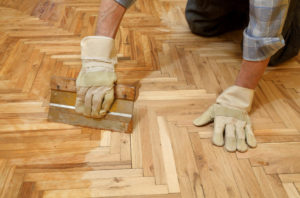During the period when the heating is turned off, the batteries are just installed. So do not be surprised: on this warm may day, we will talk about choosing a radiator.
Traditionally, the simplest way to obtain heat has been and remains the burning of oil and coal. However, hydrocarbon reserves, unfortunately, are not infinite: sooner or later we will exhaust them – this situation is known to all. Willy-nilly it is necessary to save: with the maximum benefit to spend already received energy. After careful calculations, it was found that a significant part of it is spent on heating residential and administrative buildings. Therefore externally imperceptible heating devices at once became object of the careful thermal engineering calculation aimed at increase of efficiency of removal of heat.
Methods of heat transfer
The basis of competent heat transfer is elementary school physics. Heat is transmitted in two ways: convection and radiation.
Convection: as a simple example, take the heating of the water in the kettle: the lower layers of the liquid, heating, rise up, replacing the upper cold layers. Thus, the entire volume of liquid is heated. Convectors (heating devices, working on the same principle) instead of the liquid is driven through the air, quickly heating it.

Radiation: how this mechanism works, it becomes clear from the name. Heated to a high temperature surface of the heating device (in this case it is called a radiator) becomes a source of infrared radiation. In other words, the energy is transmitted in the long-wave spectrum.
How to calculate the heating power
What power is necessary for heating of premises? And here we will resort to the help of numbers — they in this case will be much more eloquent than words.
The practice of operation of the housing stock shows that about 1 kW of thermal energy is enough for comfortable heating of 10 m² of conventional housing with standard insulation. This figure is always operated by sellers of heating equipment. However, they are only partly right, or rather — only when it comes to long-standing standard insulation of premises.

Modern realities dictate their conditions: the cost of energy sources has since jumped, forcing owners of Autonomous real estate to engage in thoughtful insulation of their cottages. In many ways, this was facilitated by the vigorous development of the production of various insulation materials. Money truckers flowed on account of the insulation manufacturers, and manufacturers of heating equipment have remained sad to count the losses.
The basis of the effective heating — proper insulation
As the country practice of the last decade shows, competently heat-insulated houses consume TWO TIMES LESS heat than sellers of heating equipment and equipment (boilers, pipes, batteries and other things) cheerfully predict. That is, for heating 20 m² carefully insulated house will be enough mentioned above 1 kW of thermal energy.
Now it is appropriate to get acquainted with the possibilities of the most commonly used heating devices and compare them with the “requirements” of your cottage:
- one section of traditional cast iron battery will provide a little less than 0.2 kW;
- heating electric floor heating cable will bring 120-140 W/m²;
- oil heater — 1.5–2.0 kW;
- wood-burning stove — up to 5-10 kW.
Appropriate combinations of the systems examined, reserving a small amount of capacity in case of disconnection of centralized heat supply — the key to a comfortable winter in your home.
Battery traditions
The choice of heating devices is wide and various. On dachas it is possible to use all their versions. Let’s get acquainted with various designs of heating devices, we will pay attention to their advantages and shortcomings.
When it comes to traditional radiators, a ribbed clumsy object is unwittingly presented.

Now they are rarely seen even in the country: the time of heavy radiators with a menacing look irrevocably gone. Today modern heating devices are in fashion: practical, effective, convenient and stylish.
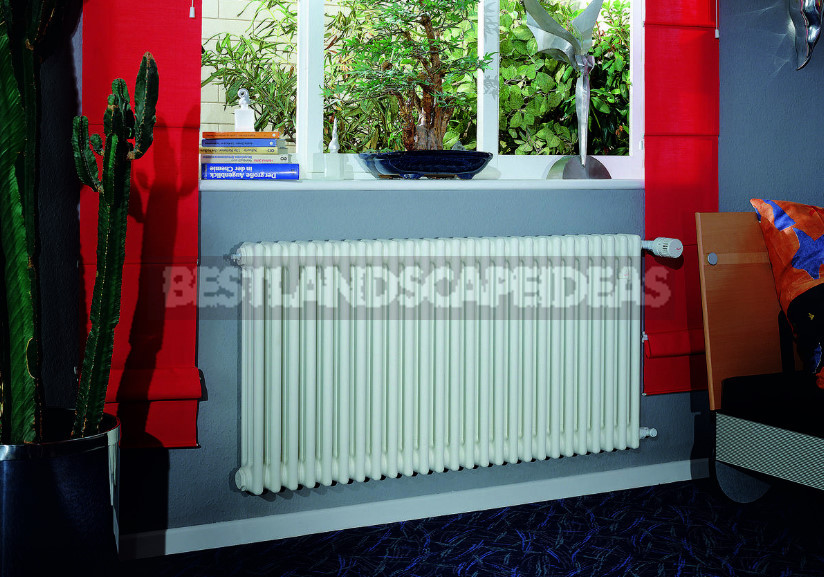
To say that the design of the new heating devices is diverse — to say nothing, because the range is really amazing: radiators are semicircular and curved along the contours of the room, in the form of transparent screens and stair railings!
But the design design, and the decisive factor in the acquisition of a particular model of radiator are still technical and operational characteristics.
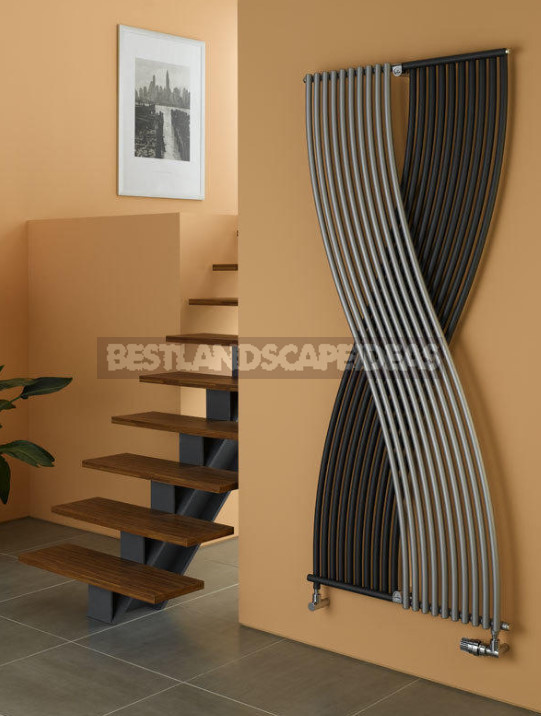
Thermal inertia of radiators
Radiator designs can be divided into two groups: devices with large and small thermal inertia. What is thermal inertia? Imagine a huge steam locomotive traveling at a certain speed along the railway tracks, and a small trolley following it. If at some point abruptly stop both of these vehicles, the light trolley will stop, as they say, rooted to the spot. While the braking distance of the locomotive will be hundreds of meters. Absolutely similar situation with heating devices.
Heavy cast iron radiator after disconnecting the supply of coolant for a long time will continue to heat the room.
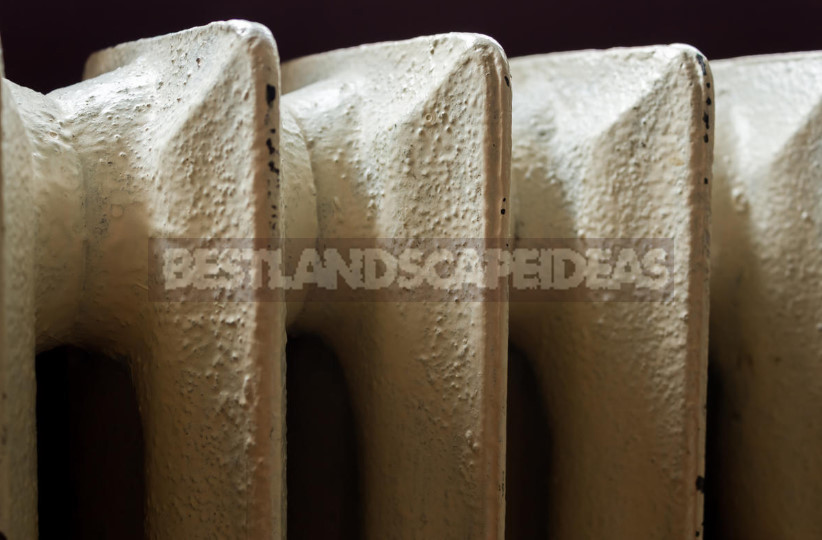
A light bimetallic or aluminum radiator, the capacity of which is only a few liters, cool immediately.
But this feature of radiators made of different metals can be viewed from the other side: if you want to maintain the temperature during the day +25ºC, and you are used to sleep in the cool (say, at +17ºC), in such a situation, it is the radiator-baby will be very useful. Why? Because due to the small volume of coolant, it changes the temperature much faster than its cast-iron counterpart.

Discussions on the topic: what is better — the ability to quickly change the temperature or long heating in case of emergency shutdowns — have been conducted for a long time. Clearly, it is impossible to come to a definite answer in principle. In each case, the conditions from which to proceed when choosing a radiator: if you need to protect yourself in the country from sudden changes in temperature, it is wiser to opt for reliable cast iron “heavyweights”. And if it is more important to quickly change the heat to cold (or Vice versa) — give preference to light bimetallic or aluminum radiators. These batteries work great in tandem with thermostats.
The thermostat said it was warm and inexpensive
The appearance of the thermostats have had a considerable impact on improving the comfort and significant savings in the operation of the heating radiators.
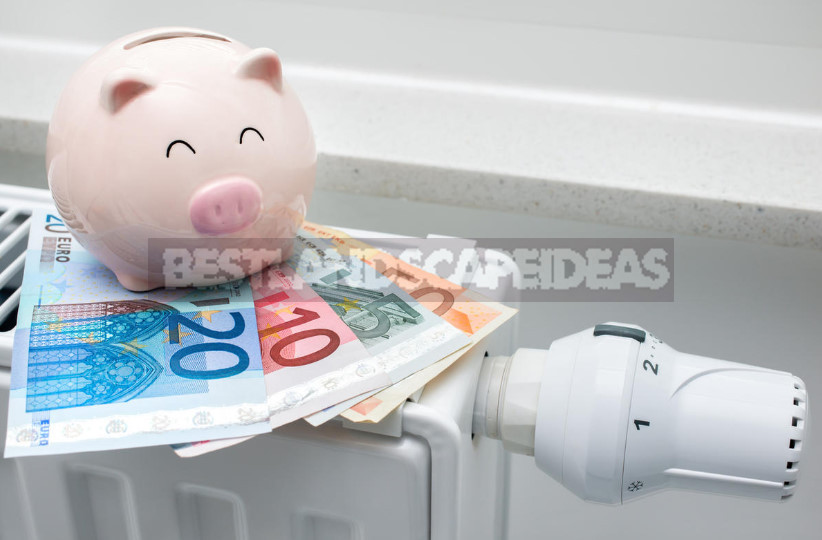
Now the air temperature in your home is clearly regulated: thanks to the thermostats, which are equipped with each device, it is easy to set the desired degree of heating of the radiator.
Possible problem and solution
It is necessary to tell about one important detail of operation of heating water radiators — potentially possible air stopper. It happens that when filling the radiator at the top of the air plug is formed, which is able to completely block the circulation. To overcome this trouble is quite simple: the radiator or install a special faucet, bleed (manual mode) the air, or the air needle valve: turn counterclockwise and wait for the air bubble.

In this short article we have got acquainted with the main criteria of the choice of heating devices for giving, including definition of necessary power.

